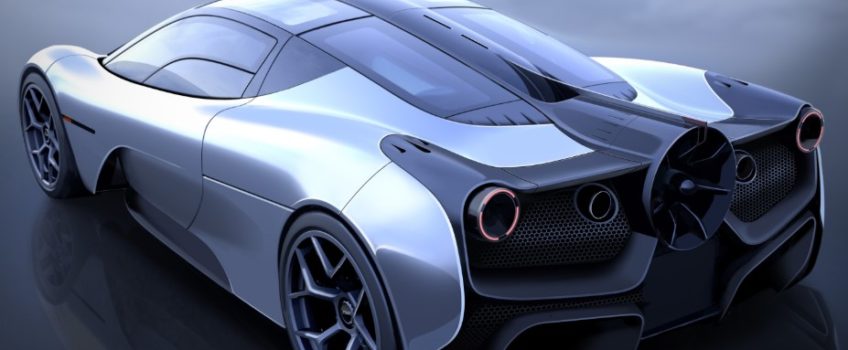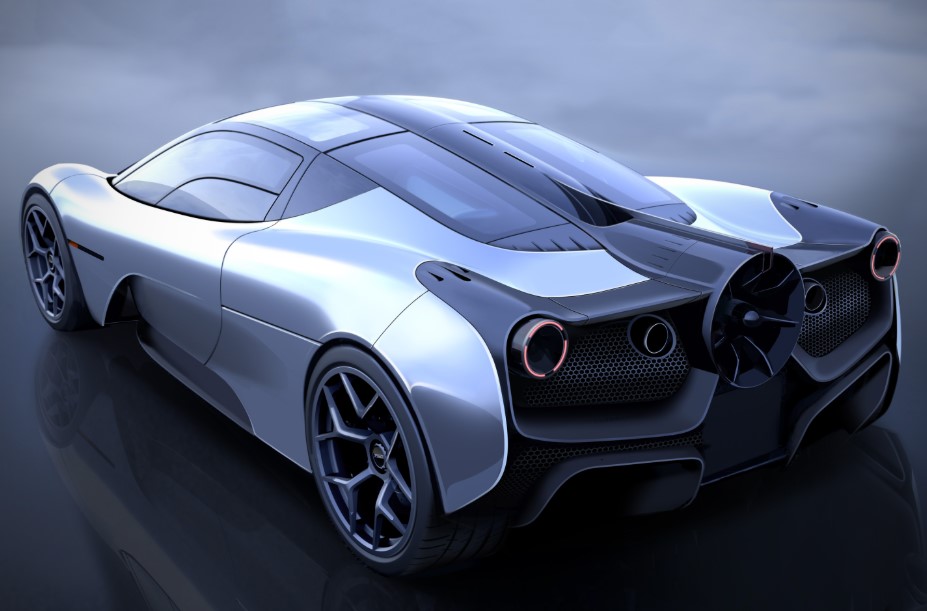

In the world of motorsport, few names impress more than Formula One genius, Gordon Murray. If you haven’t been following the story, he is designing a supercar from scratch with unbelievable specifications.
The Gordon Murray T.50 looks stunning and a true representation of automotive engineering perfection. Said to be one of the most extreme and remarkable supercars ever created, it will push boundaries beyond imagination.
One of the many standouts is the aerodynamics system which is the most advanced on any road car but it doesn’t stop there. In this article, originally from New Atlas, we highlight some of the mindboggling stats.
Designing The Gordon Murray T.50 Supercar
The T.50 Supercar is a three-seater weighing just 980 kg (2,160 lb) which is the same as the sixth-gen Opel Corsa. In terms of power to weight ratio, the comparison is unbelievable as it produces 700 hp.
Murray’s T.50 Supercar has the same “jet fighter” cabin as his own McLaren F1 and the McLaren Speedtail. If you haven’t seen this layout, it has a driver’s seat front and centre with two passenger seats behind and slightly to the sides.
The T.50 has also adopted the “Brabham BT46 fan car” concept to its aerodynamics. This 15.7-inch (40-cm) underbody fan sucks air to help push the car down onto the road when running. At the same time, this flow of air keeps the engine cool while firing out the back to fill a negative pressure area behind the car for reduced drag.
Meeting The Brief To Create The Ultimate Supercar Engine
Murray envisioned an ultra-lightweight, hugely responsive road-going car with top-end horsepower without making the car impossible to drive. There aren’t many companies with the knowledge and expertise of Cosworth who would have been able to build such an impressive engine.
The engine is designed to act as a semi-structural member in the frame where the suspension wishbones hang off the bespoke Xtrac short-shift manual gearbox. Thanks to the T.50’s steel crank sitting just 8.5 cm (3.3 in) from the bottom of the engine, it keeps the weight low down for superior handling.
Unlike many other supercars, the engine will be visible in the T.50 which is why it doesn’t have unsightly belts and they’ve cleverly hidden any other ancillaries. Murray has also added a set of gull-wing engine bay doors that rise from the spine of the car for easier mechanical access while providing some extra theatre.
Power And Engine Noise
The engine in the T.50 Supercar doesn’t seem to go after excessive power but thanks to Cosworth meeting Murray’s challenging brief, it looks amazing with impressive stats and noise to match.
The stunning sound of this supercar may be difficult to put into words but Murray has gone out of his way to ensure that it’s “one of the best-sounding road car engines ever made”. Would it surprise you to find there are no turbochargers in the engine?
Turbos may help generate extra power quickly and easily but there’s really no need for it in a supercar that produces more than 700 horsepower while weighing under the 1,000 kg mark. As turbos harvest exhaust energy, they can actually reduce much of the natural noise of a high-performance engine.
Engine Specifications
Made from high-strength aluminium with titanium valves, rods and clutch housing, the total engine weight is a mere 178 kg (392 lb). It is the lightest street V12 engine ever created with the ability to rev from idle to its 12,100rpm redline in three-tenths of a second (28,400 revs per second).
The 3.9-litre, naturally aspirated V12 engine delivers a peak of 654 horsepower at 11,500 rpm. Maximum torque is 467 Nm (344 lb-ft) at 9,000 rpm but makes at least 332 Nm (245 lb-ft) from as low as 2,500 rpm. This means the T.50 can deliver usable torque lower down so driving in traffic and pulling away at traffic lights is pretty easy.
Take it up a notch by engaging VMAX mode which turns the car’s integrated starter-generator into an electric boost. It provides an additional 49-odd horsepower that takes it over 700 hp.
Conclusion
It may be loads of fun looking at 1,000+ horsepower hypercars but, in all likelihood, the T.50 could very well be better to drive than all of them. The superlight and stunning design, ample power, impressive handling and high revs make this a worthy contender in anyone’s books.
An interesting comparison is that a Formula One car gains about 10,000 revs per second which is roughly a third of the rate at which the T.50 can spin. If that doesn’t indicate engineering genius from Cosworth and Gordon Murray Automotive, nothing will. As it stands, only 100 will be produced but there’s no confirmation yet of a price.
For more stories covering all things engineering, manufacturing and technology, please read our blogs and follow us on social media.
This site uses Akismet to reduce spam. Learn how your comment data is processed.


 Mail:
Mail: 




Leave a Comments